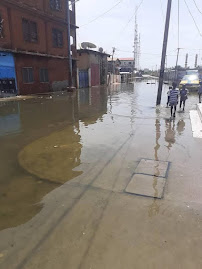By: ROHEY NGUM
A Growing Disaster Threat for The Gambia
 |
| Poor environmental keeping can contribute to climate change, pollution, and poor land use intensify global warming and increase disaster risks." |
The flash flood of 2022 exposed Banjul’s vulnerability as an island city and highlighted the critical importance of involving local stakeholders in major development projects, such as the Banjul Project. A lack of proper consultation with the Banjul City Council—an institution with valuable expertise in the city’s drainage system—was a key factor contributing to the disaster. The sealing of a major canal and inadequate pumping infrastructure worsened the flooding.
“Scientific research has shown that Banjul faces the risk of losing more than 15% of its land by 2050 if precautionary measures are not taken,” said Mr. Njie, a resident of Banjul.
The flood led to water contamination, property damage, and exposed the economic fragility of the Banjul community. It underscored the urgent need for early warning systems and data-driven decision-making by institutions such as the National Disaster Management Agency.
“As a concerned resident, I appreciate Banjul’s efforts to plant trees in wetlands, the inner city, and along the beach as part of its mitigation strategies,” Mr. Njie added.
In response to these growing threats, The Gambia is implementing a comprehensive climate strategy. This includes investing in climate-resilient infrastructure, promoting sustainable land management practices, and reducing greenhouse gas emissions through international cooperation and financial support.

Comments